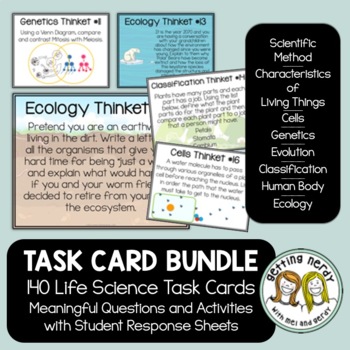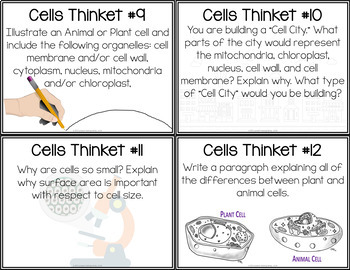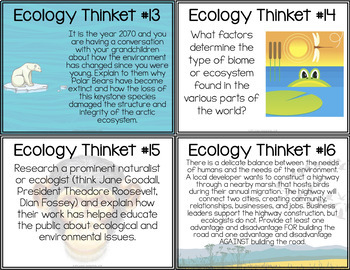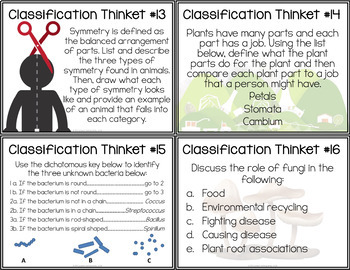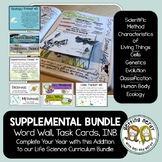Life Science Task Card Bundle
- Zip
- Google Apps™
- Internet Activities

What educators are saying
Products in this Bundle (7)
showing 1-5 of 7 products
Also included in
- Word walls? ✓ Interactive Notebooks? ✓Task Cards? ✓You're ready to teach with this comprehensive bundle to supplement your life science curriculum. Engage your students with over 200 Interactive Notebook activities, a year-long visual word wall with roots, suffixes and prefixes AND English and SpaniPrice $169.95Original Price $218.25Save $48.30
Description
These open-ended and inquiry-based cards will get your kids thinking about science! Engage your students with over 130 Life Science task cards, perfect for warm-ups, exit tickets, project starters, stations, differentiation, review, enrichment, and so much more! Use these activities as stand-alone lessons or as a supplement to our Curriculum Bundle.
WHAT'S INCLUDED in this YEAR-LONG PRODUCT:
• SEVEN sets of Life Science task card sets including over 130 cards in two sizes:
→ Cells and Cell Processes (DIGITIZED FOR GOOGLE CLASSROOM)
→ Scientific Method and the Nature of Science (DIGITIZED FOR GOOGLE CLASSROOM)
→ Genetics and Heredity (DIGITIZED FOR GOOGLE CLASSROOM)
→ Evolution (DIGITIZED FOR GOOGLE CLASSROOM)
→ Classification (DIGITIZED FOR GOOGLE CLASSROOM)
→ Human Body Systems (DIGITIZED FOR GOOGLE CLASSROOM)
→ Ecology and Ecosystems (DIGITIZED FOR GOOGLE CLASSROOM)
• Directions for each activity
• Answer keys
• DIGITAL GOOGLE CLASSROOM links to all items listed above which can be easily converted to Microsoft School with directions provided or altered to fit your school’s personal learning management system
THIS PRODUCT IS ALSO FOUND IN OUR:
• Life Science Supplemental - Interactive Notebook, Word Wall, Task Card Bundle
CHECK OUT OUR OTHER LIFE SCIENCE PRODUCTS:
• Life Science Biology Curriculum Bundle
• Life Science Supplemental - Interactive Notebook, Word Wall, Task Card Bundle
• Life Science & Biology Interactive Notebook Bundle
• Life Science Centers / Lab Stations Bundle - Cross-curricular STEAM Activities
• Life Science Vocabulary Bundle
• Life Science Word Wall Bundle
SEE HOW THIS LESSON ALIGNS WITH THE NGSS, TEKS or GSE
Because we have created many of our own graphics or have purchased licenses to other graphics with permission, we cannot offer our resources in editable format unless otherwise stated.
TERMS OF USE (TOU):
All rights reserved by GETTING NERDY®️
• This product is to be used by the original purchaser only
• Intended for classroom and personal use only
• Copying for more than one teacher, classroom, department, school, or school system is prohibited
• This product may not be distributed or displayed digitally for public view
Failure to comply is a copyright infringement and a violation of the Digital Millennium Copyright Act (DMCA). Clipart and elements found in this PDF are copyrighted and cannot be extracted and used outside of this file without permission or license.
Life Science and Biology Task Card Bundle © 2012 to present Getting Nerdy ®️ All Rights Reserved

